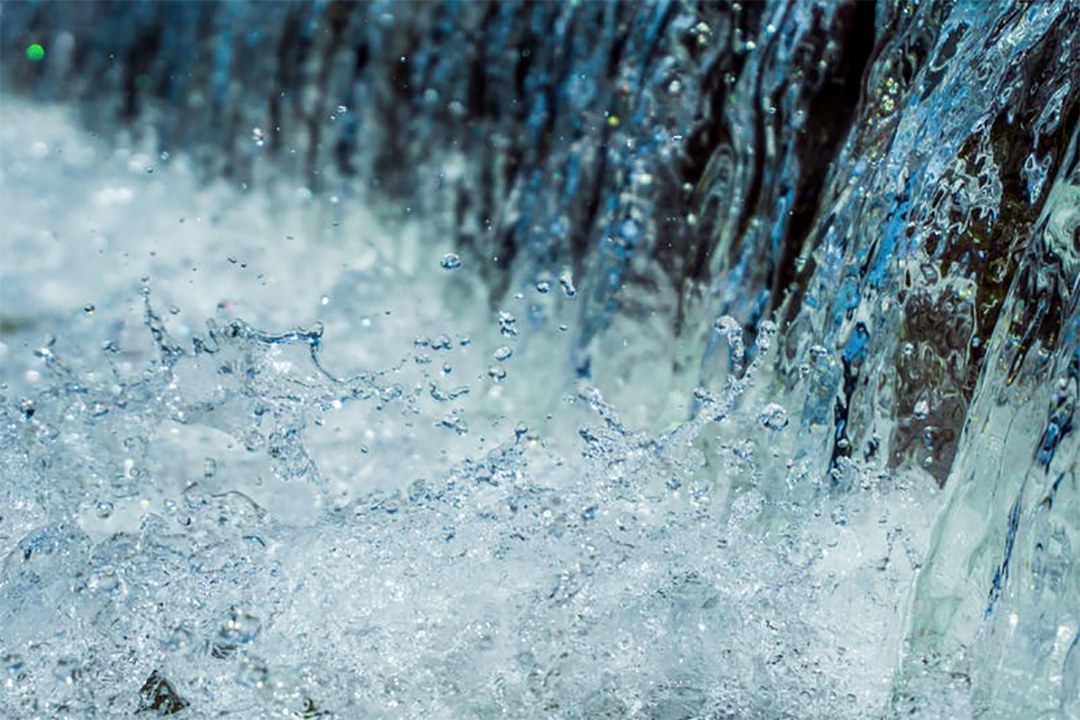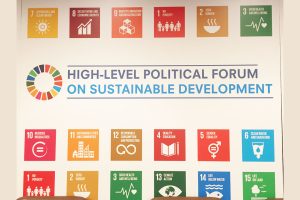5 July 2018: The world is not on track to reach the Sustainable Development Goal on clean water and sanitation (SDG 6), according to an UN-Water Report based on the latest data available for the 11 SDG 6 global indicators. The report titled, ‘SDG 6 Synthesis Report 2018 on Water and Sanitation,’ offers the High-level Political Forum (HLPF) a “joint position from the UN family on the global status on SDG 6 and other water-related targets.”
SDG 6 has eight targets, addressing: drinking water; sanitation and hygiene; water quality; water-use efficiency; integrated water resources management; water-related ecosystems; and means of implementation. The Synthesis Report outlines the challenges faced under each of these targets, provides charts depicting country and regional performance, discusses accelerating progress on the Goal, and provides summaries of ‘key messages’ on each target. The report concludes with general recommendations, including adopting “smart technologies” and engaging in multi-stakeholder partnerships, among other measures.
On drinking water (SDG target 6.1), coverage increased from 81% to 89% between 2000 and 2015, but progress among the lowest-performing countries has been insufficient to achieve universal coverage by 2030. On sanitation (SDG target 6.2), access to basic sanitation services increased from 59% to 68% over that same time period, but rural areas lag behind, and managing fecal sludge has become a challenge. The report highlights that substantial investment will be required, particularly in rapidly growing urban areas, to install sewerage networks and sanitation systems, as well as strengthen the capacity of local and national authorities to manage them.
While progress monitoring on water and sanitation drew on data from at least the year 2000, when the Millennium Development Goals (MDGs) were adopted, Synthesis Report authors observe that there has been a shorter history of collecting data on the other SDG 6 targets.
On water quality and wastewater treatment (SDG target 6.3), the report notes challenges for both developed and developing countries, especially with regard to monitoring industrial pollution. Preliminary estimates suggest that, in high to middle-income countries, 59% of household wastewater flows are safely treated, while the extent of industrial pollution is unknown.
On water-use efficiency (SDG target 6.4), the report finds a wide range of efficiency levels across the globe, and calls for additional indicators and data that can reflect improvements in agricultural use of water, and reduced losses in municipal distribution networks.
On integrated water resources management (IWRM) (SDG target 6.5), the report finds that most progress towards implementation has been in the areas of cross-sectoral coordination and public participation at the national level, but levels of financing, action on gender issues and aquifer management still remain low.
On water-related ecosystems (SDG target 6.6), the authors report that the world lost 70% of its natural wetlands over the last 100 years. Artificial water bodies such as reservoirs and rice paddies have increased; however data collection systems do not differentiate between artificial and natural wetlands. They call for further detailed data on water-related ecosystems and their benefits, and for complementing local data with earth observation data.
On means of implementation (SDG targets 6 a. and b.), the report cites research findings that the capital investments necessary to reach SDG targets 6.1 and 6.2 are around three times the current levels of investment, and that investments in achieving other targets will also require a significant increase.
The authors argue that achieving SDG 6 is crucial for achieving the rest of the 2030 Agenda. They also emphasize the interdependence among SDG 6 targets, noting, for example, the energy sector’s role in water withdrawals, and the possibility of reducing water pollution to increase access to freshwater.
To help develop key messages to be conveyed to the HLPF, an online multi-stakeholder dialogue on the report was launched on 2 May with a briefing for UN Member States. The dialogue, which will continue through September, will seek input according to the following guidelines: overall feedback (2-16 May); main messages for the HLPF (25 June to 9 July); and looking forward and next steps (31 August to 14 September).
At the HLPF, further discussions on achieving SDG 6 will take place in the context of several water-related events. They include, inter alia: a half-day review of SDG 6 implementation hosted by the UN Department of Economic and Social Affairs (DESA); a UN-Water side event on global progress on water and sanitation; a ‘Water and Faith Communities’ side event organized by the Ecumenical Water Network; and a side event on ‘Ensuring Intergenerational Policy Dialogues for the Achievement of SDG 6,’ which will explore opportunities for greater youth engagement, organized by the Water Youth Network, UN-Water, the International Hydrological Programme of the UN Educational, Scientific and Cultural Organization (UNESCO-IHP) and the World Youth Parliament for Water (WYPW). [UN-Water Press Release] [UN-Water Report Web Page] [Publication: Sustainable Development Goal 6: Synthesis Report on Water and Sanitation] [UNESCO Press Release on Events] [SDG Knowledge Hub Story on Public Dialogue on Report] [SDG Knowledge Hub Story on Synthesis Report Dialogue]

